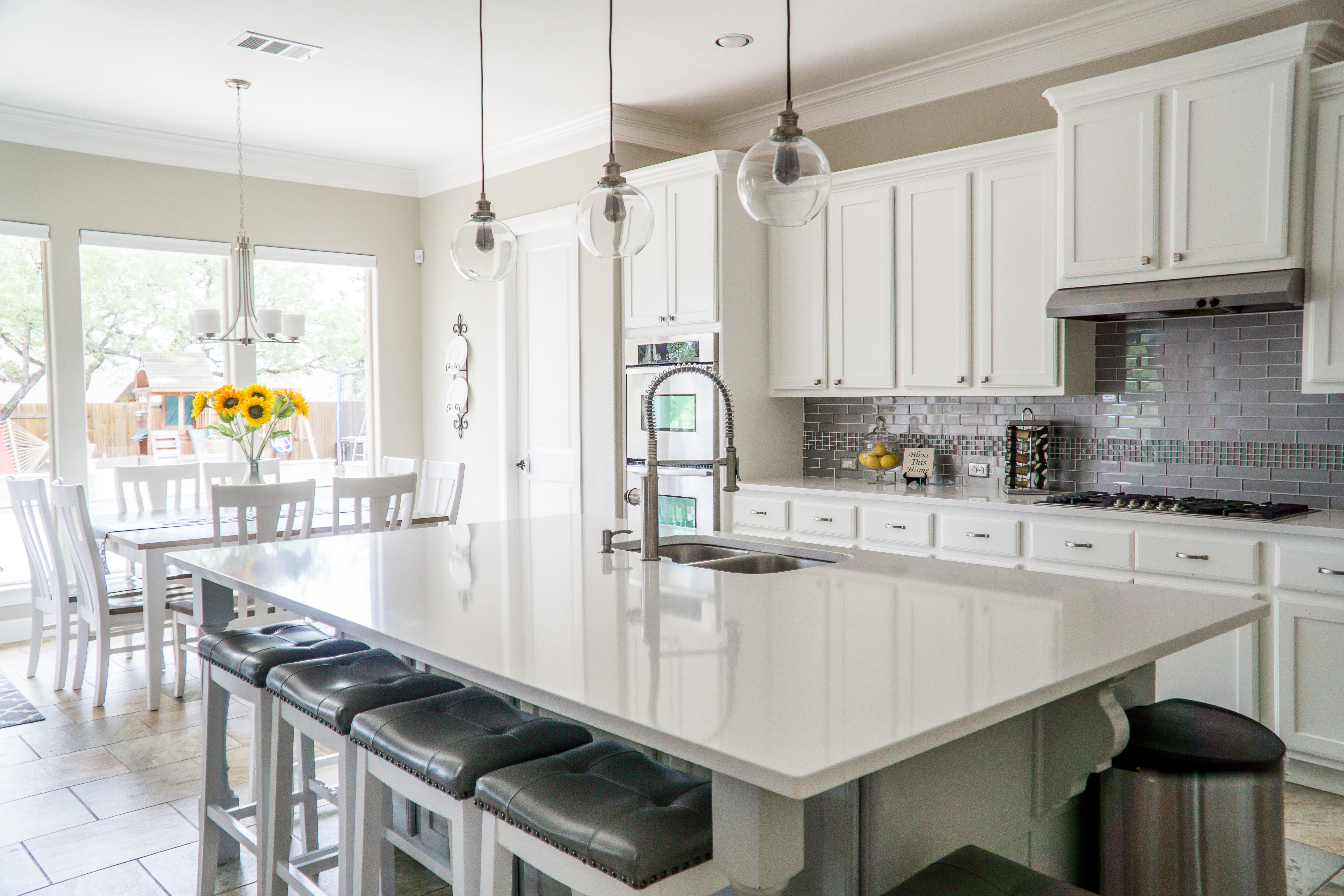Measuring Kitchen Counter-top Space Behind Ranges, Cook-tops & Sinks. Figure 210.52(C)(1)

By: Jerry Durham | Apr 03, 2019
210.52(C) of the 2017 NEC lays out the requirements for kitchen countertops and the receptacles that are required to serve them. The countertop space located directly behind a range, counter-mounted cooking unit (such as a cooktop), or sink may or may not be counted as part of this measurable countertop surface when determining receptacle requirements and receptacle spacing for the countertop. It all depends on the depth of countertop surface behind that component.
Kitchen Countertops
When a range, cooktop, or sink is installed within a straight piece of countertop, and the depth of countertop surface behind that range, cooktop, sink, etc. measures less than 12 inches, then that component is considered to have broken that countertop into two separate pieces of countertop, and each section of countertop on either side of the component must be treated separately when measuring it for receptacles.
However, when the depth of countertop surface measured behind that component is 12 inches or more, then the countertop is considered to remain one-piece, and has not been broken in two, even though a range, cooktop or sink now rests in it. When this is the case – your tape measurement goes right across the countertop behind that component and you continue to measure the countertop as if there was nothing there interrupting it.
It may be that your measurements end up with a receptacle installed behind that range, cooktop or sink – or perhaps not – it just depends on how it lays out when marking off outlet boxes. But either way, the point is, if you can measure 12 or more inches from the back edge of that range, cooktop, or sink to the very back of the countertop surface where it meets either a backsplash or the adjoining wall, then you have to treat the whole countertop as one piece, and your 48″ distance between receptacles carries right on across the back-side of that range, cooktop, or sink.
Corner Countertops
Now, the measurement is somewhat different if that component (range, cooktop, or sink) is mounted within a corner countertop. Your measurement of countertop surface depth behind a corner-mounted component is again measured from the rear edge of the component to the farthest point where the two corners of backsplash or wall meet, but the deciding number is 18 inches – not 12 inches. If the measurement of countertop surface depth behind the component is less than 18 inches, then the component is considered to have broken that countertop into two pieces, and you must treat each piece of countertop on either side as separate countertops, measuring them accordingly and following the measurement guide found in the NEC illustration 210.52(C)(1).
If the measurement behind the component is 18″ or more, then the corner-mounted component has not broken the countertop in two, and your measurement carries on as if the component was not even there. Follow the method of measuring a corner countertop provided in the illustration in Figure 210.52(C)(1) of your NEC.
You may or may not end up with a receptacle behind this corner-mounted range, cooktop, or sink, it will just depend how your measurements fall when you are spacing receptacle boxes 48″ apart (The max distance allowed between them when installing these receptacles to comply with the Code language.)
Small appliances meant for countertop use in a kitchen or similar area generally come with a 24″ cord from the factory. Spacing countertop receptacles so that they meet Code: A receptacle located within 24″ of every countertop break, and then located so that no point along the countertop surface measures more than 24″ from a receptacle, nearly guarantees a receptacle within range of a small appliance, no matter where the appliance sits on the countertop.
 Keep in mind, Figure 210.52(C)(1) provides two illustrations for the proper way to measure this countertop surface area when a component is installed within the countertop. One illustration shows a component (a cooktop or sink) being mounted within a straight countertop space that runs along a straight piece of kitchen wall. The other shows the component mounted in the corner of a countertop, where two countertops meet like the corner of a picture frame. These illustrations make it clear just how to perform these measurements, regardless of how the component is installed. The goal is that no place along the countertop is farther than 24″ from a receptacle. That is why 48″ is the maximum allowed distance between any two countertop receptacles: A point centered between two receptacles that are spaced 48″ apart, leaves you with the maximum allowed 24″ on either side.
Keep in mind, Figure 210.52(C)(1) provides two illustrations for the proper way to measure this countertop surface area when a component is installed within the countertop. One illustration shows a component (a cooktop or sink) being mounted within a straight countertop space that runs along a straight piece of kitchen wall. The other shows the component mounted in the corner of a countertop, where two countertops meet like the corner of a picture frame. These illustrations make it clear just how to perform these measurements, regardless of how the component is installed. The goal is that no place along the countertop is farther than 24″ from a receptacle. That is why 48″ is the maximum allowed distance between any two countertop receptacles: A point centered between two receptacles that are spaced 48″ apart, leaves you with the maximum allowed 24″ on either side.
Small appliances meant for countertop use in a kitchen or similar area generally come with a 24″ cord from the factory. Spacing countertop receptacles so that they meet Code: A receptacle located within 24″ of every countertop break, and then located so that no point along the countertop surface measures more than 24″ from a receptacle, nearly guarantees a receptacle within range of a small appliance, no matter where the appliance sits on the countertop.

